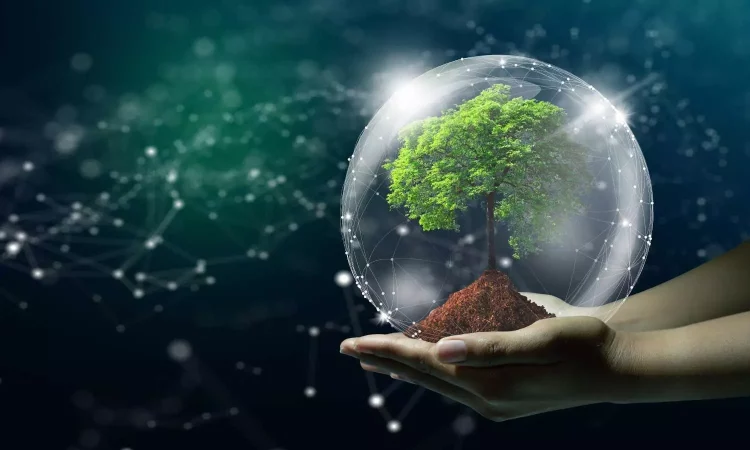In the 21st century, the conversation around sustainability and green technologies has reached a tipping point. As industries across the globe recognize the urgent need to address environmental challenges, many are investing heavily in cleaner, greener alternatives. With the looming threat of climate change and environmental degradation, the question is not just whether green technologies will shape the future, but how soon and how profoundly they will dominate industry.
This article explores the current state of green technologies, their potential to reshape industries, the challenges they face, and the opportunities they present. By the end, we will have a clearer picture of how close we are to seeing green technologies dominate industrial landscapes across the world.
1. The Global Shift Towards Green Technologies
Green technologies, or “clean” technologies, are innovations designed to reduce environmental impact, conserve resources, and promote sustainability. These technologies encompass a broad spectrum, ranging from renewable energy sources to energy-efficient machinery, electric vehicles (EVs), waste management solutions, and sustainable agriculture practices.
The global shift toward green technologies is driven by several factors:
- Climate Change: Rising temperatures, extreme weather events, and ecosystem disruptions are forcing governments and businesses to act decisively.
- Public Demand: Consumers are becoming more conscious of environmental issues, demanding that companies adopt sustainable practices.
- Government Policies: Governments worldwide are enacting stricter regulations to curb emissions, promote clean energy, and encourage sustainable business practices.
- Technological Advancements: Innovations in clean technology are accelerating, making green solutions more affordable and accessible to industries of all sizes.
The combination of these forces is creating a fertile ground for green technologies to thrive, with industries increasingly looking to adapt to this new paradigm.
2. Key Sectors Embracing Green Technologies
While green technologies are having an impact across virtually every sector, there are a few industries where their adoption is particularly pronounced.

Renewable Energy
The renewable energy sector is the cornerstone of the green revolution. Solar, wind, hydroelectric, and geothermal power are gradually replacing fossil fuels as the primary sources of energy.
- Solar Energy: Solar panels, which convert sunlight into electricity, have seen significant technological advancements. Prices for solar panels have dropped dramatically, making them accessible for both residential and industrial use. Solar farms are now powering entire cities, and innovations like solar paint and transparent solar panels are pushing the envelope even further.
- Wind Energy: Wind turbines are another major player in the renewable energy sector. Offshore wind farms, in particular, have proven to be an efficient source of power. The development of larger and more efficient turbines is driving down costs and increasing energy output.
- Hydroelectric & Geothermal: Although these technologies are not new, their potential is still being tapped in many parts of the world. Geothermal power, which harnesses the earth’s internal heat, is particularly promising in areas with volcanic activity.
Electric Vehicles (EVs)
Transportation is one of the largest contributors to global greenhouse gas emissions. However, the rise of electric vehicles (EVs) is beginning to change the face of the automotive industry.
- EV Adoption: Car manufacturers are rapidly transitioning from internal combustion engine (ICE) vehicles to EVs. Companies like Tesla, Rivian, and traditional giants like Ford and General Motors are rolling out electric models, some of which are already dominating the market. EVs offer zero tailpipe emissions and are more energy-efficient than traditional vehicles.
- Battery Technologies: The key to the future of EVs lies in advancements in battery technology. The development of solid-state batteries, for example, promises to significantly increase energy density, charging speed, and battery life.
- Infrastructure Development: As EV adoption grows, so too does the need for a robust charging infrastructure. Many cities and nations are already building extensive networks of charging stations, which will be crucial for widespread EV adoption.
Sustainable Agriculture
Agriculture is one of the largest industries in the world, but it also has one of the highest environmental impacts. Green technologies in agriculture aim to reduce water usage, minimize pesticide use, and increase crop yield efficiency.
- Precision Farming: Precision agriculture involves using technology such as drones, sensors, and AI-driven analytics to optimize crop production. These tools help farmers reduce the use of water, fertilizers, and pesticides, while maximizing yields.
- Vertical Farming: With the rise of urbanization and the strain on arable land, vertical farming is emerging as a solution. By growing crops in stacked layers inside controlled environments, vertical farming reduces land use and water consumption, while increasing productivity.
- Alternative Proteins: As plant-based and lab-grown proteins gain popularity, agriculture is evolving to meet the demand for sustainable food sources. Companies like Beyond Meat and Impossible Foods are disrupting the meat industry with plant-based alternatives, while lab-grown meat technology promises to revolutionize the future of protein consumption.
3. Challenges to Green Technology Domination
Despite the tremendous promise of green technologies, several barriers remain.
Cost and Investment
While green technologies have become more affordable over time, the initial investment can still be prohibitively high for some businesses, particularly small and medium-sized enterprises (SMEs). Renewable energy infrastructure, EV manufacturing, and the adoption of new agricultural practices require significant upfront capital. Without government subsidies or financial incentives, many companies may hesitate to make the transition.
Technological Limitations
Many green technologies, especially in energy storage and battery life, still face limitations. For instance, while solar and wind energy are abundant, they are also intermittent. Current battery storage systems are expensive and may not yet offer the efficiency needed to store excess energy. Additionally, the energy required to manufacture some green technologies, such as EV batteries, remains high, leading to debates over their net environmental impact.
Regulatory and Political Barriers
Despite the growing recognition of the importance of green technologies, political will and regulation are still inconsistent in many parts of the world. In some countries, fossil fuel industries still receive substantial subsidies, which makes it more difficult for clean technologies to compete on an even playing field. Furthermore, differing political priorities and regulations around environmental standards create a fragmented global market for green technologies.

4. The Path Forward: Opportunities for Green Tech
Despite these challenges, the path ahead for green technologies is full of potential. Several factors could help accelerate their adoption and dominance in industry:
Government Policy and Subsidies
Government intervention will play a crucial role in the success of green technologies. Policies such as carbon pricing, renewable energy subsidies, tax credits for electric vehicles, and regulations mandating emissions reductions will incentivize businesses to invest in clean technologies. International agreements like the Paris Climate Accord also create a sense of urgency for nations to transition to greener economies.
Corporate Responsibility
As the global population becomes more environmentally conscious, corporations are increasingly recognizing the importance of sustainability. Leading companies are adopting net-zero carbon goals, sustainable sourcing practices, and investing in green technologies to stay ahead of the curve. This creates a powerful feedback loop, where the demand for green solutions fuels their development, and the availability of these solutions, in turn, drives further adoption.
Technological Innovation
Ongoing research and development (R&D) in green technologies continue to push the envelope. The emergence of new materials, artificial intelligence, and blockchain could unlock new possibilities for energy efficiency, waste reduction, and sustainability. As these technologies mature, their costs are expected to decrease, making them more accessible to industries worldwide.
5. Conclusion: A Green Future for Industry?
It is clear that green technologies are poised to play a dominant role in the future of industry. While significant challenges remain, the combination of technological advancements, changing consumer preferences, and political action is creating an environment ripe for transformation. Industries across the globe are already embracing green solutions, and as the technologies continue to evolve, we can expect them to become the foundation of a more sustainable and prosperous future.
The next few decades will be critical in determining how quickly and thoroughly green technologies can dominate industry. But one thing is certain: the future is green, and it’s only a matter of time before green technologies become the norm rather than the exception.











































